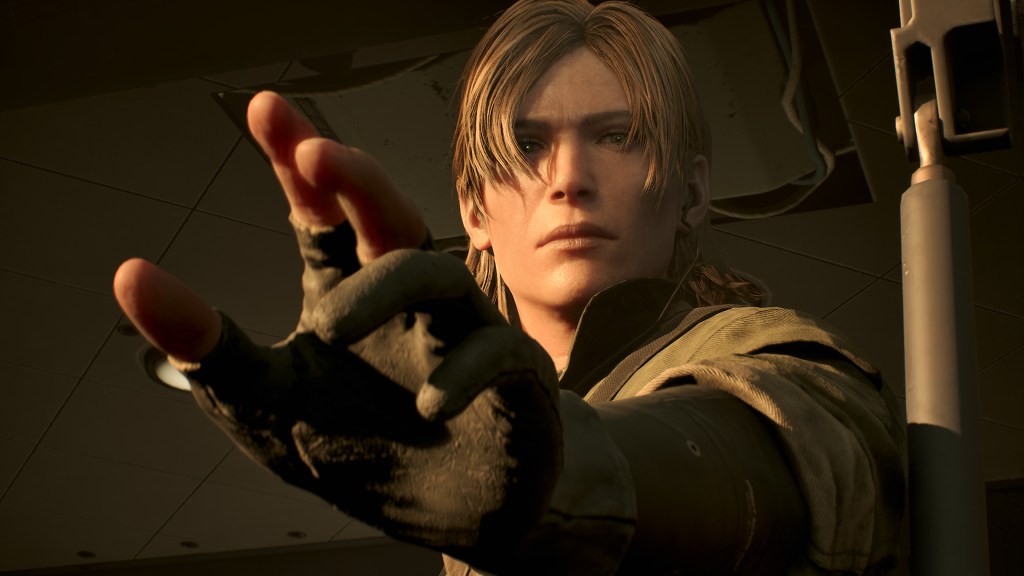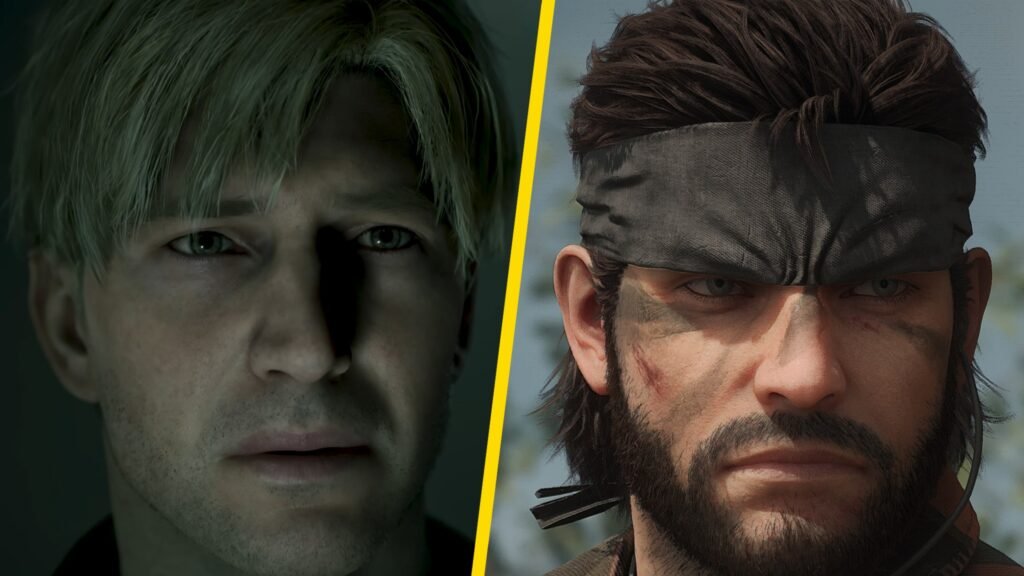There’s a scene in the Dead Space remake where players visit the game’s shooting range located in the thick of the doomed USM Valor. It’s in the same place as it was in the original, but it’s a full obstacle course this time instead of a mere hall with glowing targets to shoot. Upon pressing the button to start the mini-game — the same process seen in the original — the lights go out and necromorphs start pouring in, leading to a manic scramble and surprising violation of the safety this room held in 2008. It’s a perfect microcosm of how a remake can pivot in order to provide something new within the context of the familiar.
This works doubly well for a horror game since comfort is the antithesis of being scared, but it speaks to the power a remake can have when it goes outside of the established lines. The Silent Hill 2 remake is similar to the 2023 Dead Space because it also takes many creative liberties. Bloober Team didn’t just slap prettier graphics and a handful of new options on the original, but instead consciously added to the experience so that it, in some regards, stood on its own, too. Konami’s more recent remake, Metal Gear Solid Delta: Snake Eater, goes down the safer path of essentially tracing the original and shows how that approach is a lot less exciting.
Metal Gear Solid Delta Is Decent, But Too Safe

From beginning to end, Delta is, at its core, the same game that hit the PS2 in 2005 (or, technically, 2006 with the beefed-up Subsistence re-release). It’s even possible to sync up the cutscenes on another device while playing Delta and see them play side by side. The camera cuts and voice acting are the same; it’s just 20 years of technology separating the two.
It’s a novel practice, but it’s a novelty that loses its appeal quite quickly when the otherwise overwhelming familiarity begins to set in. Taking down The Fear is still the same. Sneaking out of the prison with just a fork and an empty revolver is still a pain. Witnessing Snake get his ass handed to him by Volgin before the gut-wrenching torture sequence is still difficult to watch. Delta sits within the realm of comfort, and that’s much less interesting.
This isn’t to diminish the brilliance of Metal Gear Solid 3 or what Konami has done to modernize the game. MGS3 remains a high point for the series, so there’s value in revisiting its narrative and sneaking through its jungles yet again. The two studios have also implemented a decent amount of quality-of-life changes, like a more intuitive UI, smoother shooting controls, and a photo mode, and even salvaged modes like Snake vs. Monkey and the Guy Savage sequence that have been excised from other versions.
But MGS3 is still widely accessible — thanks to Master Collection Vol. 1’s wide multiplatform release — so the idea of an obsessively faithful remake is a bit superfluous. And while the aforementioned new features are nice, MGS3 is not clunky enough to render the original a dated artifact destined to appeal only to those with nostalgia for it.
Bloober Team’s Big Silent Hill 2 Gamble

Silent Hill 2, on the other hand, is not widely accessible, thanks to the infamously botched HD collection for the PS3 and Xbox 360 that was built with incomplete code. Given its scarcity and the sentiment that Bloober is not a skilled developer, there was every reason to play it safe and attempt to exactly mirror Team Silent’s horror staple with the remake. But the studio decided to veer a little and put its own stamp on the horror classic.
Bloober wrote new lore details, added a well-hidden meta storyline, spliced in unique enemy behaviors, re-recorded and remixed the dialogue, switched up every level, overhauled the combat, reimagined the boss fights, and much more. All of these tweaks make the Silent Hill 2 remake more appealing since they actually add to the conversation. Not every change benefits the experience — being over twice as long drags it all down a bit — but they collectively give this remake an identity it probably wouldn’t otherwise have.
Instead of just copying and pasting what Team Silent had done, Bloober seemed to understand it needed to analyze the game on a deeper level and not just superficially recreate it in order to succeed. Creative director Mateusz Lenart explained more about this during a GDC 2025 talk.
“[We] quickly realized that we are dealing with the memory of the game, and if we want to succeed, we need to bring this memory back to the players, but not by copying what was there, but by reimagining those things for the modern era,” he said. “Step by step, we started to see the potential and places for improvement. And because of that, fear slowly turned into excitement.”
Even though the original Japanese members contributing to the remake wanted more changes, Bloober was able to still alter enough while more or less retaining a great deal of what made Silent Hill 2 a seminal part of the medium. The Silent Hill 2 remake doesn’t overwrite the original; they’re different enough to sit beside each other with their own distinct strengths and weaknesses.
Bloober’s handling of Silent Hill 2 also had the byproduct of boosting the confidence players had in the studio. Even though it saw success in some aspects, many had looked down upon the Polish developer for its amateurish horror games, like Layers of Fear, Observer, Blair Witch, and The Medium. Bloober has even addressed this once-sour sentiment in multiple interviews, noting how the studio is in a “different position” now with the remake’s success. Even though it’s hard to judge exactly how Cronos: The New Dawn will shake out, it is undoubtedly benefiting from Bloober’s handling of Silent Hill 2. It’s still worth being skeptical over, but it’s easy to be a bit more open to the idea of a solid Bloober game post-Silent Hill 2.
Delta Should Have Been More Bold

Konami, by regurgitating a prettier copy of Metal Gear Solid 3, doesn’t exhibit the same level of confidence. It was not used as a testing ground to show players how the company is going to handle the series going forward. Eventually, Konami is going to make a new Metal Gear, and Delta doesn’t offer any insight into what that might look like. The small quality-of-life additions aren’t big enough to accomplish such a task.
A bolder Metal Gear Solid 3 remake could have had a more contiguous environment, alternate ways to take down bosses, new modes, smarter enemies, or Easter eggs that sowed the seeds for Portable Ops, Peace Walker, and MGSV. There were many opportunities to make a more interesting remake that tried to carve its own path.
There would be understandable hesitation if Konami said it would be changing Metal Gear Solid 3. Like Bloober, Konami doesn’t exactly have a high amount of player trust. But instead of bravely trying to prove something, it went down the path of least resistance with a more by-the-book remake. Delta will likely go down somewhat well with players since it is incredibly safe and appeals to nostalgia. It’s still a timeless game, and these changes have made it even more timeless. But it would have been more fascinating if Delta had tried to be more of its own thing. There were plenty of ways to try and think outside the cardboard box on this one, so it’s a bit of a shame Konami tried to curl so tightly inside it.
Do you like the idea of a safer Metal Gear Solid 3 remake? Let us know in the comments below!

